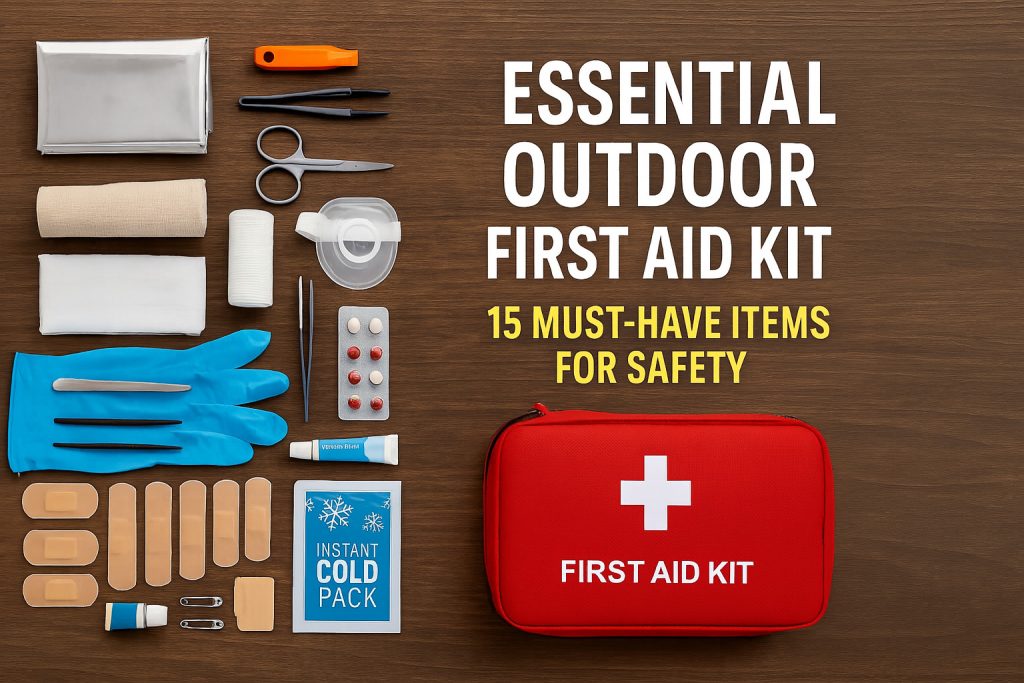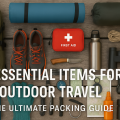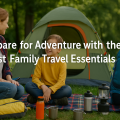Why Every Adventurer Needs a Reliable First Aid Kit
Whether you’re planning a day hike, weekend camping trip, or an extended backpacking adventure, having a well-prepared first aid kit can make all the difference. Outdoor environments present unique risks, from cuts and scrapes to insect bites and minor burns. A thoughtfully packed kit ensures you’re ready to handle emergencies, providing immediate care and potentially preventing minor issues from escalating into serious problems.
According to the American Red Cross, nearly 70% of outdoor injuries could be treated immediately with basic first aid supplies. The ability to address wounds, allergic reactions, or sprains promptly not only keeps your adventure on track but can also save lives. Therefore, assembling a comprehensive, lightweight, and organized first aid kit is essential for every outdoor enthusiast.
Top 15 Essential First Aid Items for Outdoor Adventures
Let’s break down the most important components you should include in your first aid kit for maximum effectiveness and peace of mind during your outdoor journeys:
- Adhesive Bandages (Assorted Sizes): For covering minor cuts and blisters.
- Sterile Gauze Pads & Tape: Essential for treating larger wounds and stopping bleeding.
- Antiseptic Wipes & Ointment: To clean wounds and prevent infections.
- Elastic Bandage (Ace Wrap): For sprains, strains, and securing dressings.
- Medical Gloves: Ensure hygienic treatment and protection from bodily fluids.
- Tweezers: Useful for removing splinters, ticks, or debris.
- Small Scissors: For cutting tape, gauze, or clothing.
- Moleskin Pads: Prevent and treat blisters caused by hiking boots.
- Instant Cold Pack: Reduces swelling from sprains and insect bites.
- CPR Face Shield: Offers barrier protection while performing CPR.
- Antihistamine Tablets: For allergic reactions to plants or insect stings.
- Pain Relievers (Ibuprofen, Acetaminophen): Manage headaches, muscle pain, or inflammation.
- Hydrocortisone Cream: Relieves itching from rashes or insect bites.
- Safety Pins: Useful for securing bandages or improvised splints.
- Emergency Whistle & Survival Blanket: Adds a layer of safety for signaling and cold protection.
While these are the core items, you can tailor your kit to include medications or items specific to your needs or destination.
How to Select the Right First Aid Kit Container
The container for your outdoor first aid kit is just as important as its contents. You need something that’s durable, waterproof, and lightweight. Many pre-made kits come in compact pouches, but if you’re assembling your own, consider using:
- A small, zippered nylon bag with water-resistant lining
- Clear plastic containers (for visibility and water resistance)
- Waterproof dry bags (ideal for kayaking or wet environments)
Label your kit clearly and make sure it’s easy to access, even with gloves on. Separate items in individual, resealable bags for extra protection and better organization.
Organizing and Maintaining Your First Aid Kit
Proper organization ensures you can find what you need quickly in an emergency. Use small pouches or zip-top bags to separate types of supplies, such as wound care, medications, and tools. Consider color-coding or labeling sections for added efficiency.
Regularly check your kit for expired medications, depleted supplies, or damaged packaging. Replace used items promptly after every trip, and create a checklist to make restocking easy. A well-maintained kit is always ready for adventure.
Sample Checklist for Restocking
- Review all expiration dates, especially on medications and ointments
- Check for missing or used supplies (like bandages or gloves)
- Inspect the integrity of the container for cracks or leaks
- Update any personal medications or allergy treatments
Special Considerations for Different Outdoor Activities
While the essentials remain consistent, certain adventures require specialized items. Consider your environment, trip length, and group size when customizing your kit:
Hiking and Backpacking
Focus on lightweight, compact supplies. Add extra blister prevention items, like additional moleskin and bandages. For longer treks, consider water purification tablets and electrolyte solutions in case of dehydration.
Camping
Include burn ointment and additional insect repellent for campfire and bug risks. If you’re camping with children or pets, add their specific medications and care items. Consider a small first aid manual or instruction card for reference.
Water-Based Activities
Use a 100% waterproof container. Pack extra dry towels, waterproof bandages, and antiseptic that works on wet skin. Emergency flotation devices and anti-nausea medication can also be helpful for boating or kayaking adventures.
Pro Tips for First Aid Preparedness Outdoors
Building a first aid kit is only one part of staying safe. Educate yourself and your group on basic first aid skills, such as wound cleaning, splinting sprains, and administering CPR. The American Red Cross and local outdoor organizations often offer wilderness first aid courses—consider enrolling for hands-on practice.
Keep a laminated emergency contact card and personal medical information (such as allergies or chronic conditions) in your kit. This can be crucial for first responders in the event of a serious emergency.
How to Use Your First Aid Kit Effectively
- Review your kit’s contents before each trip
- Practice opening and using supplies with one hand (in case of injury)
- Share kit location with everyone in your group
- Include a compact first aid guide for quick reference
Conclusion: Stay Safe and Prepared on Every Adventure
Investing time in assembling a comprehensive, outdoor-ready first aid kit is one of the most important steps you can take before heading into nature. With the right supplies and knowledge, you’ll be equipped to handle most minor medical situations when help isn’t immediately available. By adapting your kit to your activities and maintaining it regularly, you ensure safety, confidence, and more enjoyable outdoor experiences.
Remember, preparation is the key to any successful adventure. Stay safe, stay smart, and enjoy the great outdoors!


